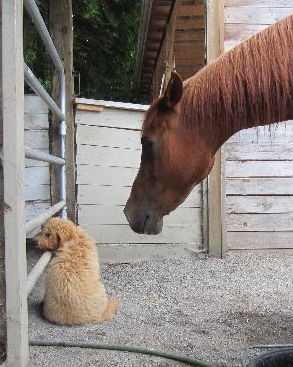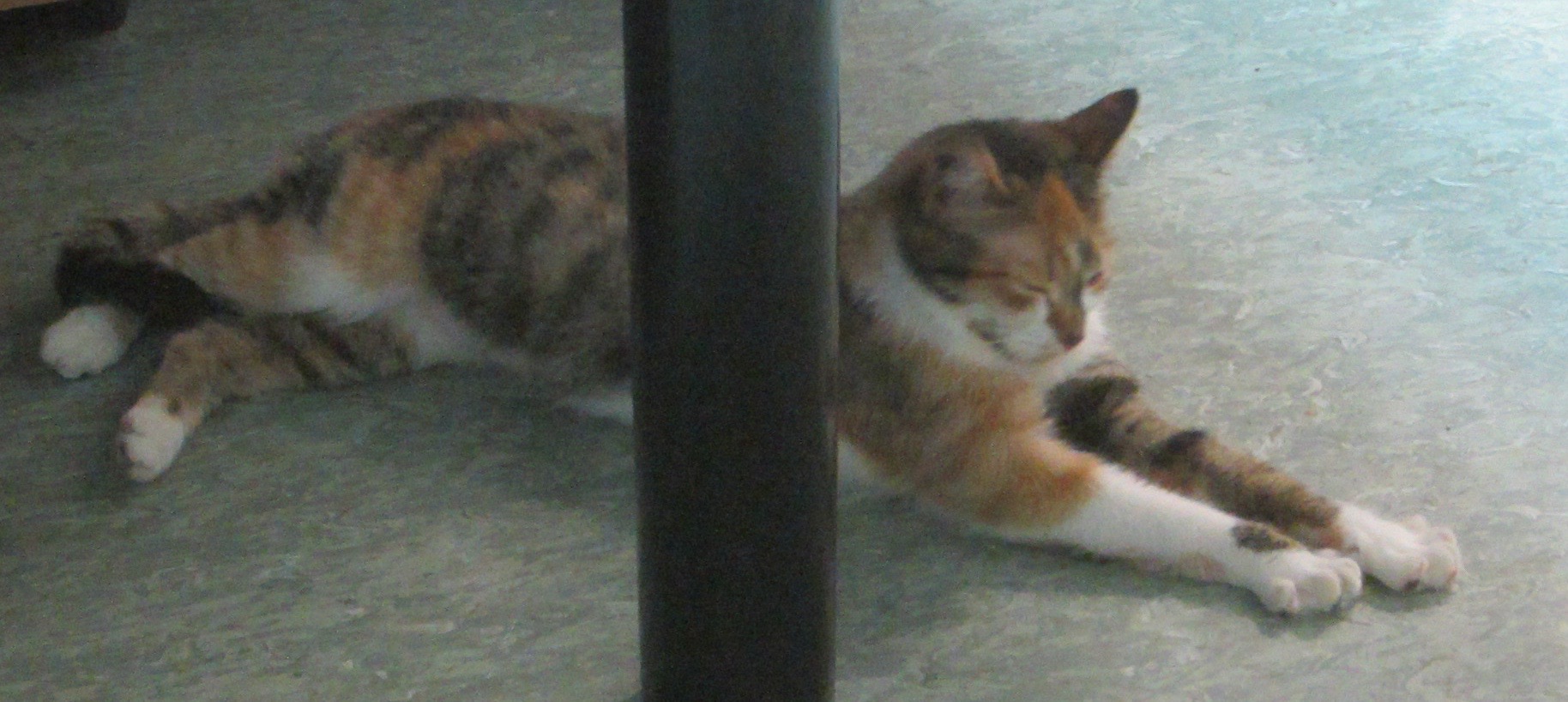
Hurrah! It’s not just dogs who exhibit calming signals, it’s horses too. And I’ll bet if we take a closer look at the other animals we rub…well, ankles with (more so than shoulders, right?)…we’ll find signs that most others do too. Simply put, calming signals are ways to make social interactions go more smoothly between animals who interact in social groups.
We humans have all kinds of social calming signals, from self-depricating laughter to verbal cues (i.e. “Excuse me”) to culturally specific social norms, to keep our interactions from going awry, our actions or words misunderstood. Doesn’t it make sense that social animals have the same?
 I read Turid Rugaas’ book, On Talking Terms With Dogs: Calming Signals a few years back when I was more involved in the horse world than the dog world. I had, however, been hanging out with dogs, pet sitting. A number of the dogs I stayed with experienced a lot of stress and anxiety, often the reason I was asked to pet sit rather then the dog being placed in a boarding facility, so the subject matter resonated for me.
I read Turid Rugaas’ book, On Talking Terms With Dogs: Calming Signals a few years back when I was more involved in the horse world than the dog world. I had, however, been hanging out with dogs, pet sitting. A number of the dogs I stayed with experienced a lot of stress and anxiety, often the reason I was asked to pet sit rather then the dog being placed in a boarding facility, so the subject matter resonated for me.
I certainly knew from experience that calming signals are apparent in cats. I lived with two cats, the first of which was my first ever Fuzzy Buddy, Lewis. She was quite timid and in my thirst for knowledge (okay, obsession) early on, I’d come across a book describing some ways to communicate that I was not a threat. The body language works so well that to this day people are shocked when their “scaredy” cats will approach me when they won’t approach anyone else. I also very successfully used calming signals with a feral cat who’d been named Scrappy for her habit of drawing blood from anyone who tried to get too close.

Anyway, at the time I read the book I didn’t made the calming signals connection with horses, largely because horses are so often described as prey animals and therefore, the metaphor goes, quite different than predator animals, dogs and humans included. There is of course a great deal of truth to the predator/prey perspective, but things are not strictly black and white.
An article I read recently, Anne Blake’s article Calming Signals: Are You Listening, made the connection with horses in a way I didn’t. If just to gain some perspective on how other species use calming signals, it’s worth a quick read.
“If you are standing next to your horse and he looks away, do you think he’s distracted or even disrespectful? When your horse yawns, is he sleepy or bored? If he moves slowly, is he lazy? These are important cues from your horse, are you hearing him correctly?”

Calming Signals: Are You Listening is a great reminder that we get a lot closer to the truth when we observe and in so doing listen to what our animals are saying to us, no matter the species.
Horses, as well as dogs, are too often described in terms of dominance and wanting to gain the upper hand, when nothing could be farther from the truth. It’s always good to remember our animals aren’t interested in taking over the world. If we are open to that idea, we are then able to ask the question, “What else might they be saying?” and open a whole new world of understanding and relationship.
“Calming signals in horses are somewhat similar and include looking away, having lateral ears, yawning, stretching down, lick- ing lips or eating to calm themselves. Can you recognize them? Calming cues communicate stress, and at the same time, release stress. It is modeling behavior for us; they want us to drop our energy level or aggressiveness as well.”
Calming Signals is a must-read dogs lovers and now for horse-lover too.
Sources:
Quotes by Anne Blake from Calming Signals: Are You Listening
Photos (c) Liz Gaige
